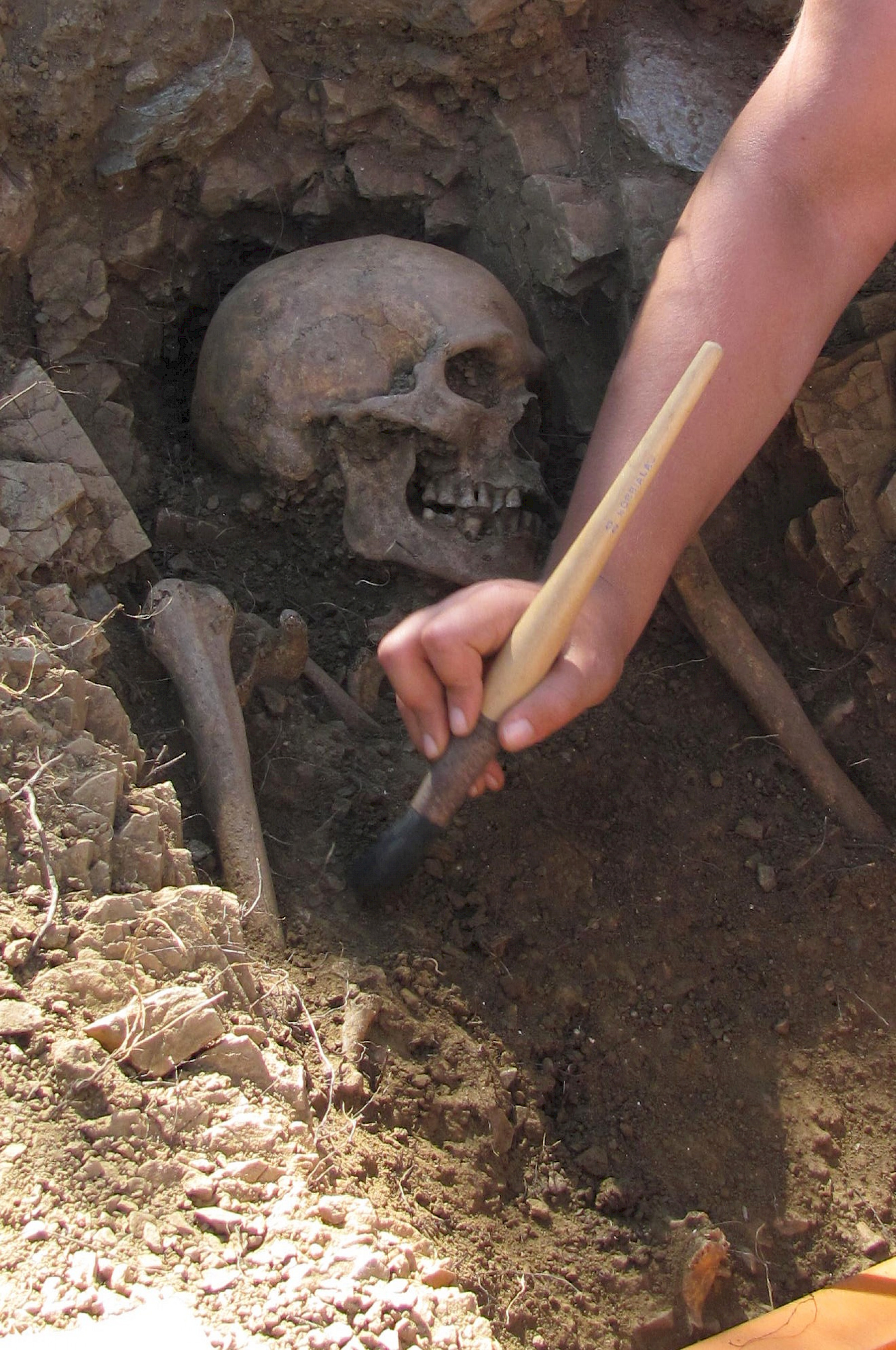Multidisciplinary team identifies case with a rare chromosomal abnormality in 1,000-year-old human skeleton in Portugal
The findings may help to better understand the incidence of Klinefelter's disease in our ancestors.
English version: Diana Taborda
An international research team, led by the University of Coimbra (UC), has identified one of the oldest cases of Klinefelter, a genetic syndrome where individuals are born with an extra copy of the X chromosome, occurring in approximately one in 1,000 genetic-male births.
These individuals may develop osteoporosis, obesity and gynaecomastia, but also tall stature and a large hip diameter. The skeleton found belonged to a man who lived around a thousand years ago in Castro de Avelãs, Bragança, during the Medieval period. The findings will allow a better understanding of the incidence of Klinefelter's disease in ancestors and open the possibility of studying the frequency of this and other genetic syndromes in the past through the analysis of human fossils.
The study "A 1000-year-old case of Klinefelter's syndrome diagnosed by integrating morphology, osteology, and genetics", now published in the prestigious scientific journal The Lancet, was coordinated by João C. Teixeira, Portuguese researcher in human genetics affiliated to the University of Coimbra, currently working at the Australian National University. Experts in genetics, statistics, archaeology and anthropology participated in the study, namely researchers from the Centre for Interdisciplinary Studies of the University of Coimbra (CEIS20), the Faculty of Arts and Humanities of the University of Coimbra (FLUC) and the Research Centre for Anthropology and Health (CIAS) of the Faculty of Sciences and Technology of the University of Coimbra (FCTUC). This interchange between various fields of knowledge reveals "the enormous potential that arises from the dialogue between distinct but complementary disciplinary areas in the study of the past", explains the study coordinator.
In addition to this discovery, the research team also developed a new statistical method, which may enable, in the future, "to diagnose other chromosomal abnormalities, such as Down's syndrome cases, and may also be applied to forensic and prenatal diagnosis contexts", says João C. Teixeira.
In the first phase of the research, the team obtained DNA from an 11th-century skeleton found in Castro de Avelãs in 2012 by the archaeology team coordinated by Pedro C. Carvalho, a professor at the Faculty of Arts and Humanities of the University of Coimbra.
This was followed by the extraction of the individual's DNA, which took place in the specialised laboratory of the Australian Centre for Ancient DNA (at the University of Adelaide, Australia). In this process of ancient DNA analysis, one of the standard objectives is to "establish the genetic sex of individuals, through computer analyses that map the DNA fragments obtained on the X and Y chromosomes of the human genome", explains Xavier Roca-Rada, Ph.D. student and first author of the study. The results obtained suggested that the individual from Castro de Avelãs would have two copies of the X chromosome and one of the Y chromosome, indicative of Klinefelter Syndrome.
After confirming the genetic results, a team of anthropologists from the University of Coimbra found morphological evidence in the skeleton compatible with Klinefelter, in particular "high stature and the hip diameter extended", adds Sofia Tereso, anthropologist of the UC. On the other hand, the team did not detect evidence of osteoporosis, which affects about 40% of individuals with Klinefelter syndrome.
The scientific article is available at www.thelancet.com/journals/lancet/article/PIIS0140-6736(22)01476-3/fulltext.

